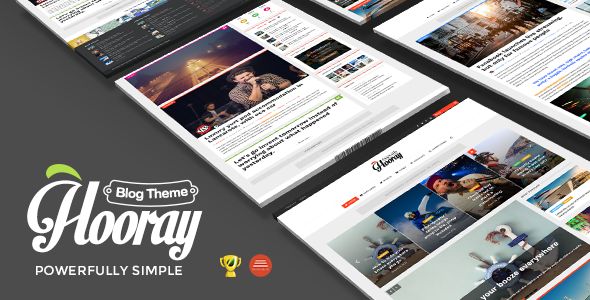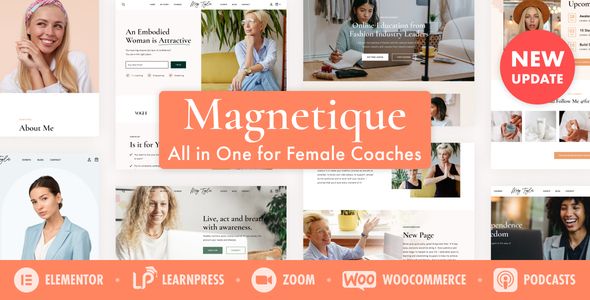Blacks – Book Store, Book Cafe & Writer WordPress Theme

- Description
- Reviews
- FAQ

Blacks – Book Store, Book Café & Writer WordPress Theme
Unlimited-site usage, one-time cost, and release parity with the official build—this distribution gives bookstores, cafés, and authors the complete premium experience without per-domain friction. Install it on every project you manage (demos, staging, client sites) and keep pace with upstream improvements so your storefronts stay consistent, fast, and easy to maintain.
Why the “unlimited, one-time” build matters to booksellers and authors
Running a book-centric website is rarely a single domain story. You might manage a flagship store, a separate book café site, a micro-site for seasonal events, and a portfolio for in-house authors. A per-site license model slows you down with activation gates and key management. This build removes those blockers. You get the full feature set on unlimited domains, stable updates that track the official release, and the flexibility to scale quickly—spin up a pop-up holiday shop, a regional landing page, or an author’s tour page without asking finance for another license or waiting on an activation email. Your team focuses on curation, events, and conversions—not on keys.
What Blacks is: a book-first theme with café and author modes
Blacks is a WordPress theme crafted for three intertwined audiences:
-
Independent bookshops & multi-branch retailers who need clean category navigation, clear formats (hardcover, paperback, audiobook, e-book), stock status, ISBN visibility, and staff picks that actually sell.
-
Book cafés that want menu pages, table booking, and event calendars (“poetry night,” “silent reading club,” “author breakfast”), all living comfortably beside the catalog.
-
Authors & small presses who need press kits, series pages, launch countdowns, excerpts, and newsletter lead magnets—without fighting a generic e-commerce layout.
At its core, Blacks balances typography and warmth. Shelves feel browsable; text blocks read like paper; imagery is restrained, letting covers and language do the selling.
Audience fit: who benefits most
-
Booksellers with deep catalog taxonomies. If you rely on staff curation, local lists, and discovery trails, the theme’s taxonomy patterns—genres, subgenres, imprints, series, age ranges, moods—make browsing feel natural.
-
Shops with “store-within-a-store.” Run a manga corner, a university press kiosk, or a used-books alcove? You can brand sub-collections while keeping the parent look consistent.
-
Cafés attached to retail floors. Menu pages, table reservations, pop-up promos, and seasonal drinks are presented as first-class citizens, not bolted-on blog posts.
-
Authors and micro-presses. You get author pages, series landing pages, excerpt blocks, media-ready press areas, and digital-first sales funnels for preorders.
Catalog design that reads like a shelf
Books sell when discovery feels effortless. Blacks treats the catalog as a reading experience:
-
Comfortable line length and generous leading—product cards breathe; titles don’t wrap awkwardly.
-
Cover-first cards with format chips (HC, PB, ePub, PDF, Audio), star ratings, and “In stock / Low stock / Preorder” badges.
-
Micro-filters for page count, trim size, language, imprint, translator, illustrator—useful for serious readers and librarians.
-
Series ribbons and “Book 2 of 4” tags to stop accidental mid-series purchases.
-
Hover reveals for synopsis hooks or staff blurbs, so browsing is fast and kinetic without feeling noisy.
Product pages tuned for book decisions
A book PDP is not a generic SKU page. Blacks includes:
-
Title block with subtitle cadence (no typographic collisions when subtitles run long).
-
Author, translator, illustrator chips with quick links to each person’s hub page.
-
ISBN-10/ISBN-13 fields, BISAC categories, publication date, imprint, binding, trim size, page count, and weight.
-
Format selector (paperback, hardcover, e-book, audiobook) with price changes and availability per format.
-
Excerpt & “Look Inside” sections that support sample pages or audio clips.
-
Bookseller notes—short, human staff picks sell more than boilerplate copy.
-
Related logic that prioritizes series continuity, author backlist, and mood-adjacent picks (“quiet literary,” “cozy mystery,” “hopepunk,” “grimdark,” “queer romance,” “translated SF”).
-
Preorder messaging & timelines with smart CTAs and clear shipping windows.
Book café mode: menus, reservations, ambiance
The café layer sits alongside the catalog without stealing focus:
-
Menu builder with categories (coffee, tea, pastries, light meals, seasonal specials), allergen badges, and modifiers (oat milk, extra shot, gluten-free).
-
Daily board / rotating specials component with start and end dates.
-
Reservation widget that can connect to your preferred bookings plugin or simple contact flow.
-
Event layout for open-mics, club meetings, and launch parties—distinct from author events but harmonized with the calendar.
-
Ambient design cues—texture blocks, warm spot colors, and gentle motion that feel “café,” not nightclub.
Author & small-press mode: narrative sells books
For authors, Blacks provides:
-
Series hubs with reading order, continuity notes, and bonus content areas.
-
Launch pages with countdowns, pre-order bundles, and early-review snippets.
-
Press kit sections (bio, headshots, cover assets, contact) designed for media use.
-
Excerpt blocks with typographic polish for poetry and literary prose (hanging punctuation, stanza spacing, verse line control).
-
Newsletter capture positioned in context (after excerpt, after author’s note) to feel invitational, not pushy.
Events, readings, clubs, and calendars
Bookstores thrive on programming:
-
Event cards with cover art, author photos, time, location, capacity, and ticket state (“Free,” “RSVP,” “Paid”).
-
Series tagging (e.g., “Debut Night,” “Kids Hour,” “Indie Press Spotlight”) to build recurring audiences.
-
Calendar views that avoid clutter and scale down gracefully on mobile.
-
Bundles tied to events—signing bundles (book + tote), club kits (10 copies + discussion guide), café vouchers.
Checkout polish for multi-format carts
Mixed carts—paperback + e-book + café gift card—are normal here:
-
Format-aware shipping (digital items fulfill instantly; physical items choose pickup or delivery).
-
Gift options with “signed bookplate,” “gift wrap,” “include note,” and pickup person fields.
-
Store pickup clarity (branch selector, pickup window, shelf hold policies).
-
Tax/VAT messaging for books vs. café goods where rules differ.
Performance and Core Web Vitals
Readers come in on mobile connections. Blacks keeps the front end lean:
-
Critical CSS inlined for above-the-fold content; defer non-critical scripts.
-
Responsive images & modern formats so cover art looks sharp without heavy payloads.
-
Font loading strategy that avoids layout shift; system stack fallback is available for zero-FOIT builds.
-
Animation restraint—subtle transitions, no gratuitous parallax that hurts scroll performance.
Pair it with your caching/CDN and sane media sizes to keep LCP steady even on image-rich category pages.
Accessibility for real readers
Books are for everyone:
-
Readable base sizes and spacious line height.
-
WCAG-aware contrasts, including subdued dark mode options.
-
Keyboard-friendly navigation and visible focus states.
-
Alt-text patterns for covers and author photos; decorative flourishes marked properly.
-
Form states (errors, hints, success) that are announced clearly.
Search, discovery, and structured data
Organic discovery works best when content is structured:
-
Schema for books (author, ISBN, format, edition, offers), events, and local business.
-
Staff picks & lists with human commentary (why it matters, read-alikes).
-
Internal linking that respects reading paths—series order, shared themes, backlist.
-
Local landing pages for branches with hours, parking, transit, and neighborhood notes.
-
Blog / editorial tuned for interview transcripts, annotated reading lists, and long-form recommendations.
Visual system and typography
Blacks comes with a bookish typographic palette:
-
Serif for long-form and sans-serif for UI, with careful scale ratios so headers don’t dwarf cover art.
-
Drop cap and pull-quote blocks for essays and excerpts.
-
Muted, tactile color tokens (cream, charcoal, ink, uncoated-paper gray) let covers pop while UI stays quiet.
-
Grid that respects covers (common ratios like 1:1.5 and 1:1.6) so rows look aligned even with varied art.
Building blocks you’ll actually reuse
-
“New This Week” carousel with date gates.
-
“Staff Shelf” grid that pins staff avatars and mini-blurbs to picks.
-
“If you liked…” rails driven by author, theme, or tone.
-
Gift guide templates (by budget, by reader type, by occasion).
-
Café promo strips that don’t clash with the catalog.
-
Newsletter embeds that feel native in editorial posts.
Multisite and brand families
If you operate multiple stores or imprints:
-
Global tokens for color and type mean one change updates everywhere.
-
Shared header/footer presets allow subtle branch branding without breaking IA.
-
Block library synchronization so “Holiday Gift Guide” or “Banned Books Week” templates roll out network-wide.
-
Role-based editing keeps new staff from breaking the layout while letting them add events and lists.
Internationalization and regional nuance
-
Language-ready templates for translated catalog copy, author names with diacritics, and right-to-left scripts.
-
Currency & tax displays that adapt for digital vs. physical goods.
-
Shipping/mailing notes for APO, PO Boxes, and regional carriers.
-
Date and time formatting that respects locale across events and preorders.
Setup: from fresh install to open doors
-
Install WordPress with HTTPS enabled from the start.
-
Install Blacks and confirm the full premium options are available immediately.
-
Set global style tokens (brand colors, typography, spacing).
-
Import the starter site closest to your concept (retail, café-forward, author-centric).
-
Create catalog taxonomies: genre → subgenre, age range, imprint, series, language, format.
-
Define product attributes (binding, trim size, page count) and format variants with pricing.
-
Upload inventory in batches with consistent metadata—titles, subtitles, contributors, ISBNs.
-
Craft 3–5 evergreen collections: staff picks, local authors, seasonal reads, award lists, “under-the-radar gems.”
-
Build café pages: menu, specials, reservations, “study table policy.”
-
Wire events and connect tickets or RSVP flows.
-
Tighten performance: image compression, caching, prudent plugin choices.
-
Accessibility & QA: keyboard navigation, alt text, error states, checkout flows.
-
Go live and watch analytics, search queries, and conversion paths; iterate weekly.
Daily operations: what keeps sales steady
-
Rotate front page carousels weekly; stale shelves are invisible.
-
Pin a modest “what our booksellers love right now”—human voices beat algorithmic lists.
-
Bundle formats (HC + e-book at a friendly delta) to lift AOV.
-
Use preorder meters (“first print nearly spoken for”) to drive urgency.
-
Photograph real tables—store vignettes convert better than pristine mockups.
-
Publish short editorial (300–600 words) around new collections and events—indexing loves freshness.
Operations for authors and presses
-
Keep series pages updated—reading order prominently displayed, new cover reveals added early.
-
Make press kits downloadable with clear usage notes; media shouldn’t email twice for assets.
-
Use launch checklists—excerpt live, preorder button wired, mailing list segment set, event dates visible, café tie-ins planned.
Security posture & maintenance
-
Clean template hierarchy without exotic hacks; easy to audit.
-
Compatibility with common hardening (WAF/CDN, login rate-limits, backups).
-
Child-theme strategy for overrides so updates land cleanly.
-
Update cadence that mirrors upstream, keeping you current on fixes and refinements.
How this distribution reduces total cost of ownership
-
Unlimited deployments eliminate key wrangling and surprise line items.
-
Predictable updates mean fewer regressions and faster patch cycles.
-
Reusable blocks & lists let junior staff do real merchandising without a designer on call.
-
Consistent UX across sites shortens training and reduces operational mistakes at busy times (launch weeks, holidays).
Frequently asked questions
Q: What exactly do I gain from this distribution?
You get the complete premium feature set with no per-domain activation. Install on unlimited sites—production, staging, microsites—and stay synchronized with official releases so functionality and compatibility match the reference build.
Q: Are updates aligned with the official theme?
Yes. Update cadence tracks upstream, so you ship security fixes and refinements on time without drifting into a fork that becomes hard to maintain.
Q: Does it support multiple formats per title?
It’s designed for books. Use variant options for hardcover, paperback, e-book, and audiobook with per-format price, stock, and fulfillment rules.
Q: Can I run a café and store under one roof?
Absolutely. Menu pages, specials, and reservations sit beside the catalog, with shared branding and distinct templates where needed.
Q: How are series and backlists handled?
Series ribbons, reading-order tags, and author hubs keep shoppers oriented. Related rails prefer series continuity and tone adjacency over random “also bought.”
Q: What about events—signings, clubs, ticketed readings?
Use the event components to set time, capacity, and ticket state. Tie bundles to events (signed copy + café voucher) to lift baskets.
Q: Will my customizations survive updates?
Keep code changes in a child theme and save templates/blocks to your library. Your look stays intact while core updates flow in.
Q: Is this an accessibility-aware theme?
Yes. Typography, color contrast, focus states, and form messaging are tuned so readers of all ages can browse and buy comfortably.
Q: Can I brand sub-collections (manga corner, used books)?
Yes. Create collection templates with nuanced color accents and signage styles while retaining the site-wide IA and checkout.
Q: Does it help with SEO for books and local discovery?
Structured data for books, events, and local business is supported, headings are sensibly ordered, and internal linking patterns encourage deep catalog exploration.
Q: How does the unlimited model help agencies?
No license juggling. Clone a proven blueprint across clients, keep updates consistent, and spend your time on curation, events, and community.
Q: Any special considerations for digital formats?
Digital items fulfill instantly with clear instructions. You can bundle digital and physical without confusing shipping steps.
Q: Can I present bilingual catalogs?
Yes. Templates are translation-ready; maintain language-specific taxonomies and ensure metadata (titles, contributors) respects diacritics and RTL where needed.
Q: Does the theme include gift features?
Gift wrap, message notes, and pickup person fields are available. Seasonal bundles and gift cards work well with the design system.
Q: How do staff picks work?
Staff shelves pair cover art with a human blurb and a face. Readers buy more when a real person says, “Here’s why I loved this.”
A practical launch checklist for a neighborhood bookstore
-
Configure genres → subgenres → moods before uploading SKUs.
-
Standardize metadata: titles, subtitles, contributors, ISBNs, page counts.
-
Write 50–100 evergreen staff blurbs for your backbone shelf.
-
Build 5 collections you can rotate monthly (Debuts, Local Authors, Translated Gems, Under $15, Small Press Spotlight).
-
Stage two events and one café promo before launch so the site feels alive.
-
Photograph real store tables—upload to feature blocks on the home page.
-
Test checkout with mixed carts (PB + e-book + café gift card).
-
Verify pickup messaging, hours, branch choice, and order-hold policy.
-
Turn on analytics, search tracking, and simple goals (add-to-cart, start checkout, order).
-
Schedule a weekly 30-minute merchandising ritual—refresh home rails, update specials, queue next week’s events.
Closing note
Blacks – Book Store, Book Café & Writer WordPress Theme is built around how readers actually browse and buy, how booksellers curate, and how authors launch. The unlimited, one-time distribution frees your team to open more shelves, host more events, and publish better lists—without license gymnastics or mismatched feature sets. Keep your sites aligned with official updates, maintain a consistent design language across branches and imprints, and let the words—and covers—do the talking.
Q: Do I need a license key?
A: No. All products are Pre-Activated. You can use 100% of the Premium features immediately.
Q: Can I use the One-Click Demo Import?
A: Yes, absolutely! We ensure the demo import feature works perfectly.
Q: Can I use the products on multiple websites?
A: Absolutely. The GPL license allows use on unlimited domains.
Q: Are the files safe?
A: Yes. All files are scanned by McAfee and VirusTotal before uploading.
Share Now!


















